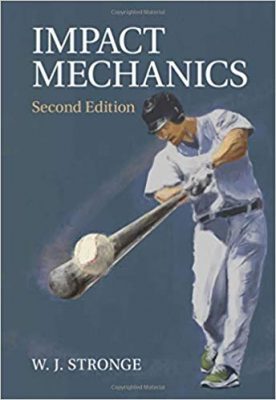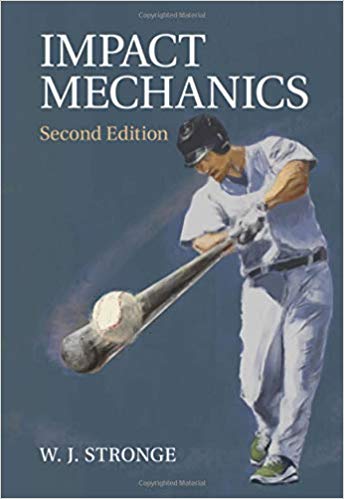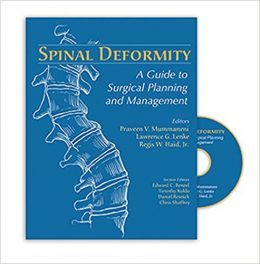 Author: William J. Stronge, PhD
Author: William J. Stronge, PhD
Publisher: Cambridge University Press – 362 pages
Book Review by: Sonu Chandiram
This book has been written for professionals, graduate students, and advanced undergraduate students of impact mechanics.
This second edition published in 2018, contains several updates, but retains the basic organization and ethos of the first edition that appeared in 2000. The current edition is primarily a graduate-level textbook that follows a path of increasing complexity as you build on what you learn in the earlier chapters.
Of course, if you are an undergraduate student but already have a grasp of the basic concepts, you will not find the material in this edition quite as challenging as others would.
Professor Stronge covers a lot of ground in this edition, and much to learn, particularly if you are yet unfamiliar with the math formulas used to analyze the impact of bodies of varying rigidity at differing velocities. The list of chapter titles we provide below gives you some sort of overview of the contents of this book:
- Introduction to Analysis of Low-Speed Impact
- Collinear Rigid Body Impact
- Planar or Two-Dimensional Rigid Body Impact
- Three-Dimensional Impact of Rough Rigid Bodies
- Tangential Compliance in Planar Impact of Rough Bodies
- Continuum Modeling for Local Deformation Near Contact Area
- Wave Propagation from Impact on Slender Deformable Bodies
- Generalized impact Analysis of Multi-body Systems
- Visco-elastic or Visco-plastic Impact
- Impact Against Flexible Structures
- Propagating Transformations of State in Self-Organizing Systems
- Impact of Sports Balls
In the author’s words, this book begins with:
- Analysis of the direct impact of two rigid bodies, then passes through:
- Considerations of impact between various types of deformable structures, and finally leads to
- Chaos theory for repeated collisions in metastable multi-body systems
But not to worry if you fear that it might be difficult for you to understand the points made. Because “along this path numerous solved examples, many drawn from the field of sport,” will help you assimilate the theory initially presented.
Also, some more good news: when Professor Stronge was working on this second edition, he re-examined the entire first edition, and he made improvements by rewriting some portions to provide improved clarity.
He has also added new chapters that provide :
- A generalized theory of multi-body impact
- Analyses of visco-elastic and visco-plastic impact
- Effects of Impact on a variety of different types of sports balls
- New problems to highlight essential points
In sum, in this book, there is much material to learn that is valuable and has been presented in a manner by the author that enables readers to understand in a clear manner.
Author:
William.J. Stronge, who has a PhD in Applied Mechanics from Stanford University in Stanford, California, joined Cambridge University in 1981 and currently is Professor Emeritus of Applied Mechanics in the Department of Engineering. He is also an Adjunct Professor of Engineering at the University of California in Davis, California. He is a Fellow of the American Society of Mechanical Engineers, and a Fellow of the American Academy of Mechanics. He is the author of two books: Structural Models for Dynamic Plasticity (1993) and Impact Mechanics (2000).
Professor Stronge’s specialty is mechanics of solids. He performs and supervises both theoretical and experimental research on impact response of plastically deforming solids directed towards applications in design of light, crashworthy structures, and energy absorbing collision barriers. Aspects of this research are the dynamics of solids with cellular microstructure and propagation of phase transformations in reactive media. Some applications are related to mechanics of sports, in particular how design of sports equipment affects performance.







